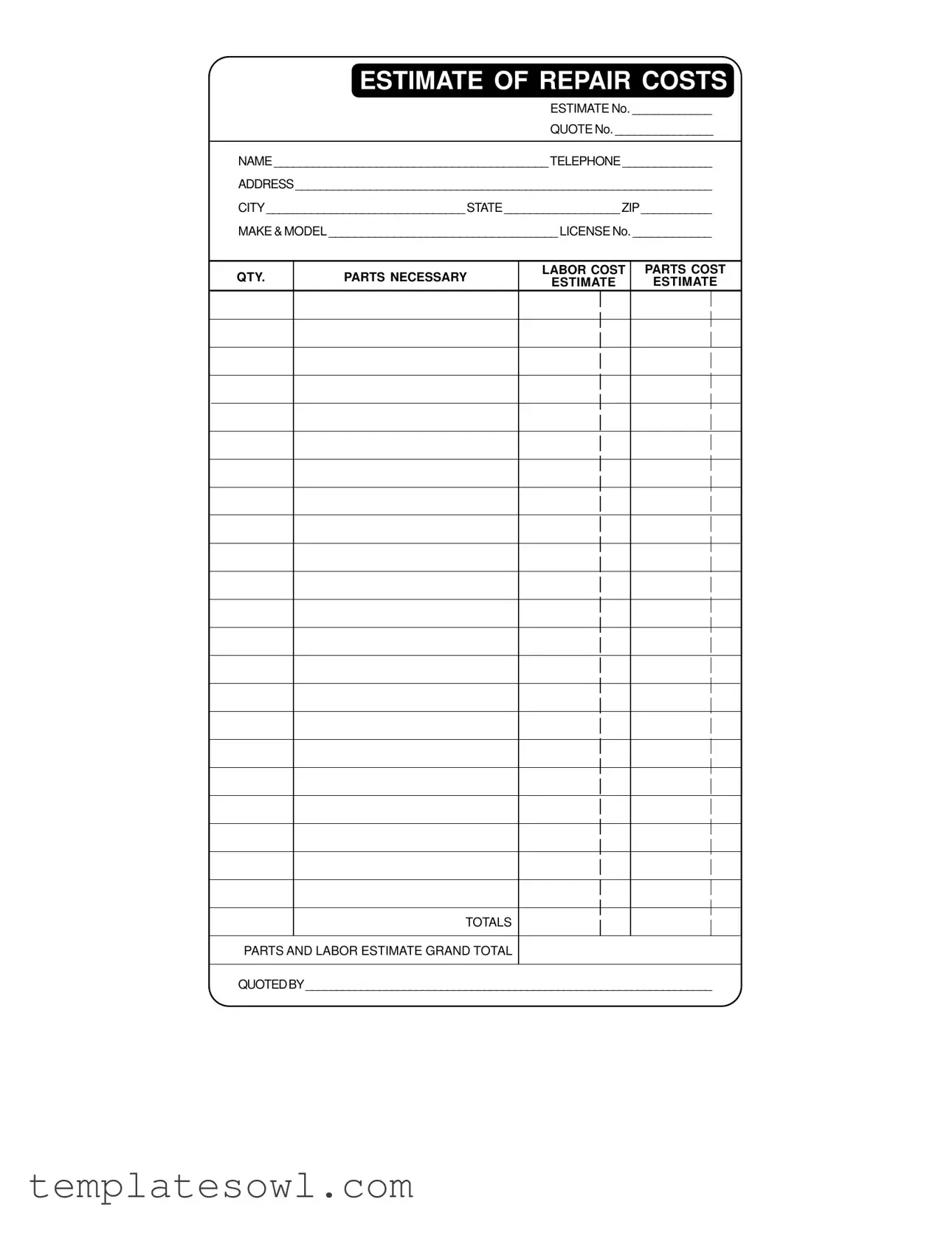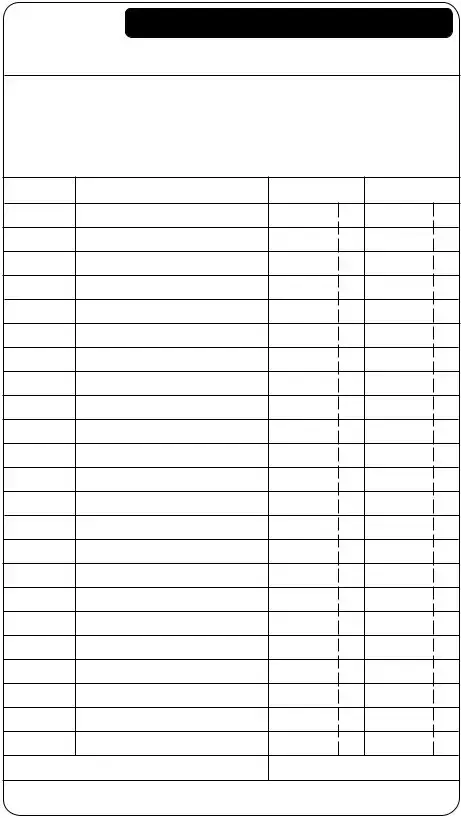What is the purpose of the Repair Estimate form?
The Repair Estimate form serves to provide a clear estimate of repair costs for an individual’s vehicle. It outlines various components of the repair, including necessary parts and labor costs. This helps customers understand potential expenses before consenting to work being performed.
How do I fill out the Repair Estimate form?
Complete the form by entering your name, contact information, and details about your vehicle, including the make, model, and license number. Then, list the quantity of parts needed, along with the labor cost and parts cost estimates. Finally, ensure to total the parts and labor estimates and provide a grand total for transparency.
What does the GRAND TOTAL represent on the form?
The GRAND TOTAL reflects the complete cost estimate for repairs, combining both the parts and labor expenses. This figure gives you the overall amount you may expect to pay should you decide to proceed with the repairs outlined in the estimate.
Who prepares the estimate on the form?
The estimate is prepared by a qualified individual, often a mechanic or repair shop representative, whose name will appear at the bottom of the form. This ensures that the estimate is provided by someone with the appropriate knowledge and expertise in vehicle repairs.
Is the Repair Estimate binding?
No, the Repair Estimate is generally not binding. It serves as an initial quote. Actual costs may vary based on unforeseen issues or changes in parts and labor requirements discovered during the repair process. Always communicate with the representative about any changes in the estimate.
What information do I need to provide to get a repair estimate?
You should provide your contact information, vehicle details (make, model, license number), and a brief description of the issue or repairs needed. This information enables an accurate assessment and more precise estimate of the repair costs.
How can I contest or question an estimate I receive?
If you have concerns about an estimate, reach out to the person or shop that provided it. Ask for clarification on specific costs or requested services. Open communication is key; they can explain the breakdown and rationale behind the quoted prices.

